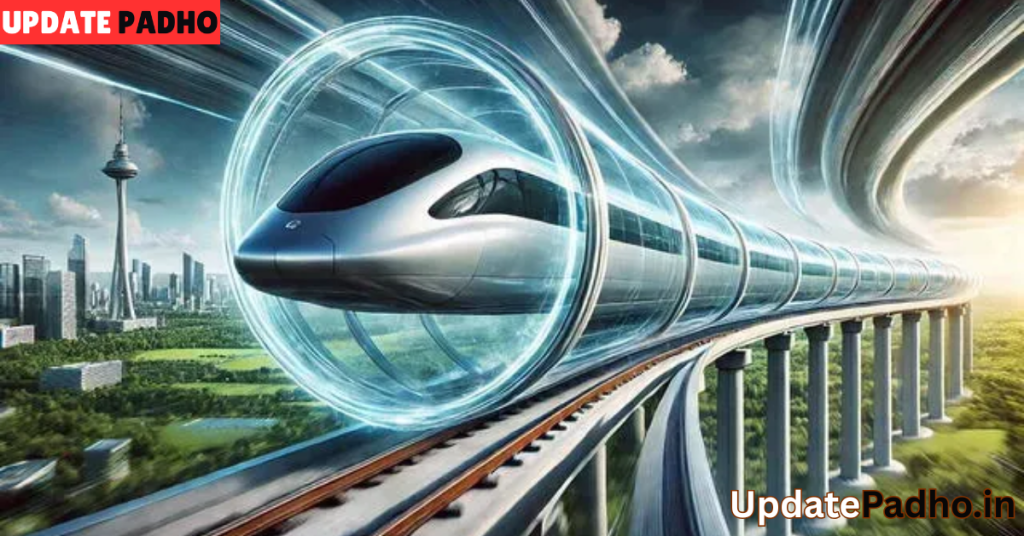The Hyperloop has emerged as a potential game-changer in transportation. First proposed by Elon Musk in 2013, this ultra-high-speed ground transportation system aims to dramatically reduce travel time between cities, slash carbon emissions, and revolutionize our daily commutes. While still in the development phase, the Hyperloop has captured the imagination of engineers, investors, and governments worldwide.
What Is the Hyperloop?
At its core, the Hyperloop is a high-speed train inside a low-pressure tube. The system uses magnetic levitation (maglev) or air bearings to allow a pod or capsule to float inside the tube, reducing friction. Because the tube is partially evacuated of air, there is minimal air resistance, allowing the pod to reach speeds of over 700 mph (1,100 km/h)—faster than commercial jets on some routes.
This near-vacuum environment, combined with the absence of ground contact, enables unparalleled speed and energy efficiency. The pods are expected to be powered by renewable energy, primarily solar panels mounted along the length of the tubes.
Speed and Efficiency
Imagine traveling from Los Angeles to San Francisco—a journey that typically takes around six hours by car or over an hour by air including airport time—in just 30 minutes. This is not a fantasy; it’s the promise of Hyperloop.
Unlike traditional rail or air travel, Hyperloop aims to provide seamless point-to-point service with minimal delays, reduced check-in times, and fewer environmental disruptions. The system is designed to be more energy-efficient than airplanes and less polluting than cars or diesel trains.
Environmental Impact
Transportation is one of the largest contributors to global greenhouse gas emissions. With climate change becoming increasingly urgent, there’s a critical need for cleaner alternatives. The Hyperloop offers a zero-emission solution powered by renewable energy, which could play a significant role in reducing the environmental footprint of long-distance travel.
Additionally, because it operates in a closed tube system, it is less vulnerable to weather-related disruptions, offering a resilient and climate-proof mode of transportation.
Challenges to Overcome
Despite the promise, several challenges must be addressed before the Hyperloop becomes a mainstream mode of transport:
- Infrastructure Costs: Building hundreds of miles of vacuum tubes, especially in urban or mountainous terrain, is a massive financial undertaking. Costs could reach billions of dollars, and funding remains a significant hurdle.
- Regulatory Hurdles: As a new mode of transportation, the Hyperloop does not yet fit neatly into existing regulatory frameworks. Safety standards, insurance, zoning, and environmental assessments will all need to be established or adapted.
- Technological Reliability: While prototype systems have shown promise, a full-scale commercial Hyperloop has not yet been tested with passengers at full speed. Safety, reliability, and emergency response systems must be proven beyond doubt.
- Public Acceptance: Traveling in a sealed tube at near-supersonic speeds might raise concerns for some passengers. Building public trust will be essential for widespread adoption.
Who Is Working on Hyperloop?
Several companies are actively developing Hyperloop technology. Virgin Hyperloop, backed by Richard Branson, was among the first to successfully carry human passengers in a test pod in 2020. Other companies like HyperloopTT and Elon Musk’s Boring Company are also working on variations of the concept, each bringing unique innovations to the table.

Globally, countries like the UAE, India, and the United States are exploring potential Hyperloop routes. Feasibility studies are underway to determine where this technology could be implemented most effectively.
The Road Ahead
The Hyperloop is not just a fast train; it’s a symbol of future-forward thinking. While commercial operations may still be years away, the groundwork is being laid today. As governments, private companies, and the public begin to see the long-term benefits of a high-speed, low-emission transportation network, investment and innovation are likely to accelerate.
Conclusion
Hyperloop represents a bold step toward redefining how we think about travel. With the potential to cut down travel time, reduce environmental impact, and bring distant cities closer together, it could very well be the future of transportation. Like any great leap forward, it faces hurdles, but with continued innovation and collaboration, the Hyperloop might one day become as common as trains and planes are today.
The race toward that future is on—and it’s moving at the speed of innovation.



